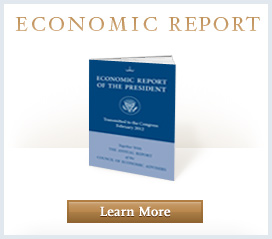Strengthening the Rural Economy - Introduction
I. INTRODUCTION
The United States is comprised of large cities and small towns, mountain ranges and rolling plains, skyscrapers and vast countryside. Underlying this variation, there is a diverse population -- with equally wide-ranging needs and contributions -- spread across our city centers and rural landscape. The Federal Government works to foster the commercial and cultural exchanges that tie America together. This report explores one segment contributing to our diverse culture and economy: rural America.
The report begins with a survey of the current state of rural America. Roughly 50 million Americans live in rural areas. Agriculture, which has traditionally been a key base of the rural economy, continues to record strong productivity gains and significant growth. But rural America is a more diverse economy than it once was. Rural residents are employed in a wide range of industries, including manufacturing, services, government, and wholesale and retail trade. While rural America offers many opportunities, its income levels, poverty rates, educational levels, and mortality rates continue to lag behind the rest of the country. It is important to take steps to reduce these disparities.
Federal support for rural America involves coordinated efforts across numerous agencies, including the Department of Agriculture, Department of the Interior, Department of Health and Human Services, and many others. This report outlines the Administration’s policies to lay a foundation for 21st-century growth that will continue to strengthen and diversify the rural economy, support rural workers and businesses, and put rural America on a path toward a more prosperous future.
We organize the discussion of the Administration’s policies for strengthening the rural economy into four main categories. The first category includes policies to support the growth of new businesses in rural areas. These policies include programs to help strengthen small businesses in a wide range of rural industries. They also involve incentives to greatly expand clean energy opportunities, which are often centered in rural areas. There are also important new opportunities for rural tourism and recreation.
A second category of policies is aimed at strengthening rural infrastructure. Infrastructure investment is central to rural prosperity. Without road, bridges, water projects, and telecommunications, rural America cannot get its products to market efficiently or be fully integrated with the rest of the economy. For this reason, the Federal government has traditionally supported rural infrastructure projects. The Obama Administration has continued that support in important and innovative ways, such as by supporting the expansion of broadband internet access to rural areas.
A third category of policies focuses on strengthening the agricultural sector. American agriculture is among the most productive in the world. The Administration has proposed measures to further open international markets to U.S. agricultural products, proposed reforms to better target farm support programs, and urged a greater focus on local and regional food systems.
The fourth category of policies is aimed at strengthening the labor force and improving the quality of life in rural America by investing in education and health care. A new set of policies aims to close the gap in educational outcomes between rural and urban areas. The Administration is also investing in the health of rural America by taking actions to increase the affordability and quality of health care, while bolstering the medical workforce and infrastructure to address the specific challenges facing rural areas.
Many of these investments in rural America were begun as a part of the American Recovery and Reinvestment Act of 2009 (see Box 1). This wide-ranging legislation sought to deal with the immediate economic crisis while also laying a foundation for future growth. As such, it represents one of the largest investments ever in the future prosperity of the country as a whole, and of rural areas in particular. The Administration is committed to continuing the reinvestment in rural America through its policies going forward.
The American Recovery and Reinvestment Act of 2009 was designed to cushion the fall in demand caused by the financial crisis and the subsequent decline in business and consumer confidence, household wealth, and access to credit. It is making new investments in people, businesses, and infrastructure that will help to ensure the economy returns to a path of robust growth.
Through the first quarter of 2010, $373 billion of tax cuts and outlays had been made, out of an estimated total of $787 billion included in the Act. The Council of Economic Advisers (CEA) estimates that these outlays and tax relief raised employment by 2.2 million to 2.8 million relative to what it otherwise would have been (Council of Economic Advisers 2010). About half of these jobs relate to spending and tax relief that went directly to families. Over the coming months, an increasing portion of the spending will take the form of government investment in everything from roads and bridges to a smarter electrical grid and telecommunications.
The Recovery Act includes funding consistent with the Administration’s policies to foster economic growth and improve the quality of livelihoods in rural America. Throughout this report, we discuss how it helps to further priorities in education, clean energy, health care, infrastructure, small business, and recreational opportunities. The Recovery Act includes funding directed to rural communities, such as $7 billion for education, $3.7 billion for water infrastructure, and $650 million for job training; and funding for more general objectives from which rural areas are expected to benefit, such as $90 billion for Medicaid, $9.6 billion for renewable energy grants and loans, $4.7 billion for broadband, and $3 billion for small business loans. While the Recovery Act funding will have a significant impact in these specific areas, its overall contributions to the recovery and growth of the economy will also have a large impact on the health of the rural economy.
Continue to II. The Current State of Rural America


